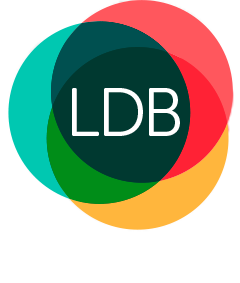Key tax outcomes of the Australian federal budget 2022
October 26, 2022

The federal government’s 2022 budget has prioritised families and affirmed previously announced reductions in personal income tax rates, while a crackdown on tax dodgers aims to reduce fraud.
Treasurer Jim Chalmers delivered Labor’s first budget since its election win in May.
“This is a responsible budget that is right for the times and readies us for the future,” he said at his budget speech.
Here is a snapshot of the key tax outcomes of the Australian federal budget 2022:
Personal income tax rates
Tax rates
For the current and 2024 financial years, the current personal tax rates remain unchanged. Despite media speculation, the budget has also retained the already legislated Stage 3 tax cuts.
From July 1, 2024, the 37 per cent tax bracket will be removed, and the 32.5 per cent tax bracket will be reduced to 30 per cent with a view towards addressing living cost pressures for a significant portion of Australian taxpayers. The top marginal rate of 45 per cent, which applies to those earning more than $180,000, will increase to $200,000, as outlined below:
| Tax rate | July 1, 2022 to June 30, 2024 | Tax rates from July 1, 2024 |
| 0% | $0 – $18,200 | $0 – $18,200 |
| 19% | $18,201 – $45,000 | $18,201 – $45,000 |
| 30% | N/A | $45,001 – $200,000 |
| 32.5% | $45,001 – $120,000 | N/A |
| 37% | $120,000 – $180,000 | N/A |
| 45% | $180,000+ | $200,001+ |
Low and Middle Income Tax Offset (LMITO)
The LMITO has not been extended beyond June 30, 2022, where workers who earned less than $126,000 were eligible for an offset of up to $1500.
The low income rebate of up to $700 for workers earning less than $37,500 has been retained.
Business tax
Instant asset write-off
Although this was an out of sequence mid-year budget, it was of note that no extension was announced to the accelerated depreciation measures.
These may still be extended in the May 2023 budget, however businesses intending to invest in depreciable assets up to a value of up to $150,000 should consider the timing of their acquisitions, with the current provisions expiring on June 30, 2023.
Thin capitalisation
The government will adjust the thin capitalisation rules from income years starting on or after July 1, 2023.
The measures will include:
- Replacing the existing safe harbour test with a 30 per cent of earnings before interest, taxes, depreciation, and amortisation (EBITDA) test. Deductions denied under this test may be carried forward up to 15 years.
- Replacing the worldwide gearing ratio with a new earnings-based group ratio to allow debt-related deductions up to the level of the worldwide group’s net interest expense as a share of earnings (which may exceed the 30 per cent EBITDA ratio)
- Limiting the Arm’s Length Debt Test to an entity’s external (third party) debt.
Off-market share buy-backs
A tax loophole used by some of Australia’s largest corporations will be shut down.
The measure, which the government said would “improve the integrity of the tax system”, will align the tax treatment of off-market share buy-backs undertaken by listed public companies with the treatment of on-market share buy-backs. This means no part of the buy-back proceeds can be treated as a dividend.
For more than a decade, large companies have been buying back their shares from shareholders off-market, often at discounted rates to the share market price.
This new measure is effective immediately.
Digital currencies
The budget reiterates the federal government’s June 2022 announcement to exclude digital currencies, such as Bitcoin, from the foreign currency tax rules.
As such, capital gains tax will continue to apply to cryptocurrency assets that are held as investments. Some aspects of the timing of this change can lead to different treatment on revenue account versus capital gains tax.
Superannuation downsizer contributions
Superannuation fund members aged 55 years and over will be allowed to make downsizer contributions. This was previously only available to those 60 years and older. All other eligibility remains unchanged.
A downsizer contribution is a one-off post tax contribution to superannuation up to $300,000 per person from the sale of their residential home. For couples, both can contribute.
The downsizer contributions don’t count towards the non-concessional contributions cap rule.
Cheaper childcare
Parents of children are set to benefit from the federal budget, with $4.7 billion allocated to delivering cheaper childcare over the next four years.
The funding will provide more generous subsidies to most families and increase the maximum subsidy rate cap to 90 per cent, with the goal of providing universal childcare to 90 per cent of all families.
The aim of the incentive is to encourage more parents back into the workforce.
Expanding paid parental leave
From July 2023, the government will increase the amount of government paid parental leave to reach a total of 26 weeks by 2026.
The change will roll out in increments of two weeks, starting from July 2024 until it reaches the full 26 weeks from July 2026.
Single parents will be able to take the full allocation of paid leave and two-parent households can decide how they will split the leave.
Targeting tax dodgers
The budget includes additional funding for the Australia Tax Office’s tax avoidance taskforce, which aims to crack down on tax avoidance by multinational companies and individuals.
The multinational tax integrity package will raise about $1 billion over four years while the shadow economy and personal income tax taskforce will raise about $3.7 billion over four years.
Cheaper medicines
For the first time in 75 years, the cost of general scripts on the Pharmaceutical Benefits Scheme (PBS) will decrease. From January 2023, the cost of general scripts under the PBS will drop from $42.50 to $30.
Speak to the tax experts at LDB Group
If you’d like to know more about how the federal budget will impact your personal or business tax affairs, contact LDB Group by calling (03) 9875 2900 or completing the contact form below.
